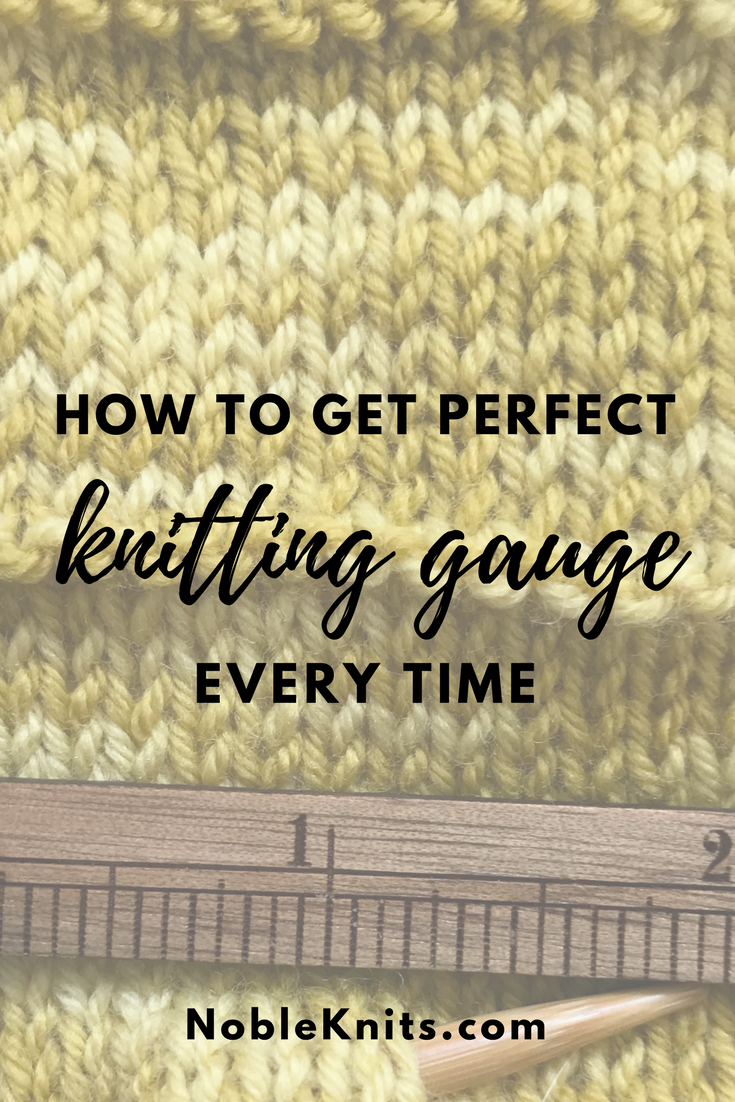How to Get Perfect Knitting Gauge
Why does knitting gauge matter?
There are times when a stitch gauge should be perfect (think vests, cardis, pullovers, etc.), because when gauge if off you'll end up with a garment won't fit properly.
So, it's very important to check gauge in knitting before you begin a project.
This is a step many knitters want to skip and then are disappointed when their completed project doesn't fit. Don't waste countless hours, energy, and money by skipping the gauge swatch.
What is gauge in knitting?
Gauge is simply the measurement of stitches over 4 inches. It's important to knit a gauge swatch and then place a ruler and carefully count the number of stitches across for inches. That will provide you with your "gauge."
Checking gauge in knitting is important because if you have too many stitches than the recommended gauge in a pattern, your project will be too large. If you have too few stitches in your knitting gauge swatch, then your finished garment will be too small.
These knitting gauge problems are easy to fix!
Why do I have to knit a gauge swatch every time I knit a new project?
Gauge is subjective.
By that I mean, when a designer creates a pattern, it is based on the gauge she got when knitting the project.
It is NOT a set standard.
She might have been really relaxed so her gauge is loose, and we have no way of knowing what type of needle (bamboo, wood, metal, etc.) and that can effect the gauge.
Because of all of these variables, it's important to take the time to match the designer's stitch gauge so that you will have the finished results you want.
Pro Tip: Sometimes a designer will give a gauge over 1" instead of 4". Just multiply that gauge x4 to get an accurate gauge over 4 inches. I'll explain bit more on this below.
Let's begin by checking gauge in our knitting
With project yarn in hand in the correct size needles we begin to knit always feeling sure we'll get gauge. Sometimes the gauge will be perfect and sometime not. When it's not, here is a tip to try.
We'll start with a sample I'm knitting.
The pattern states the following: 6 stitches per inch on US 6 needles using fingering weight yarn. So, I'll need to multiply 6 stitches x 4 inches to find out what a gauge over 4 inches should be.
In this case the gauge should be 24 stitches to 4 inches.
I knit my swatch using a bamboo knitting needle. When I check my gauge, I end up with 6.5 stitches per inch. What should I do know? Read on!
My swatch knitted on size US 6 bamboo needle: 6.5. stitches per inch - not quite gauge.
What should I do know?
Most often, if you have too many stitches per inch on your gauge, we would suggest going up a needle size.
If you have too few stitches, you should go down a needle size.
But in this case, since I'm only off by 1/2 stitch, we're going to try something else. Let's try using a different type of needle!
Now, I'm going to use the same yarn, a size US 6 needle but this time I'm using a metal knitting needle rather than bamboo. This time, I got the exact gauge of 6 stitches per inch.
My swatch knitted on size US 6 metal needles: 6 stitches per inch - perfect gauge!
How does changing needle type change the gauge?
Simply changing the type of needle can make the difference.
The bamboo I started with gave me too much control and my gauge was too tight.
Working with a metal needle gave me less control and loosened my stitches just enough.
The metal needle not only got my stitches to gauge, but produced a much bouncier fabric and plumper stitches.
This little tip may not make a you an "everytime swatcher", but you just may knit that swatch from time to time when it really counts! Have you skipped making a gauge and ended up with a project too big or too small? Do you make a gauge swatch for all knitted garments?
Happy Knitting,
Donna the Knitting Doctor









